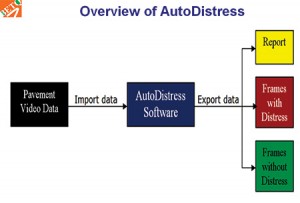India’s road network spreading over 46,89,842kms in length has become the second largest road network in the world after United States of America. The quantitative density of India’s road network with 0.66km of roads per square kilometre of land is found to be similar to that of the United States (0.65) and far higher than that of China (0.16) or Brazil (0.20). However, often stretches of the existing road networks deteriorate and fall below the acceptable level, required to serve the increasing Indian traffic and population. A little improvement in maintaining the physical infrastructure, road transport provision and operation can result in large scale economical benefits. To achieve this goal, one of the important tasks is to develop a sustainable road asset management system that can monitor and assess the conditions of road networks continuously, objectively and rapidly. Namita Akoijam, Director, BETQ Data Analytics Private Limited, Gurgaon and Prof Lalit Kumar Das Former Head, IDDC, Indian Institute of Technology Delhi write on the need to have a sustainable road assessment system to assess conditions of the roads.
 Indian roads spreading over 46 lakhs kilometres in length are maintained and managed by many competent authorities or agencies such as National Highway Authority of India, Border Road Organization, State Public Works Departments, State Municipalities and other stakeholders. All these agencies survey roads via traditional field inspection techniques or manually using road videos or still images, collected by very expensive dedicated road survey vehicles. This is very expensive and time consuming and has limited uses in road asset management.
Indian roads spreading over 46 lakhs kilometres in length are maintained and managed by many competent authorities or agencies such as National Highway Authority of India, Border Road Organization, State Public Works Departments, State Municipalities and other stakeholders. All these agencies survey roads via traditional field inspection techniques or manually using road videos or still images, collected by very expensive dedicated road survey vehicles. This is very expensive and time consuming and has limited uses in road asset management.
Automation in Road Inventory and Condition Survey in India
During 2006-2011, representative sample database of video clips of National Highways have been collected by CSIR-CRRI using ARRB) Hawkeye NSV imported from Australia at a cost of `3Cr of under the Ministry of Road Transport and Highways sponsored R&D project “Development of GIS based National Highways Information System”. However, in the absence of reliable and automated road video processing toolkits, the analysis of the collected raw video data couldn’t be completed as expected.
Recently, as a part of Prime Minister Narendra Modi’s Digital India Initiative, NHAI has awarded a World Bank funded project to M/s HIMS Limited, New Zealand in joint venture with SATRA Infrastructure Management Services Pvt. Ltd, India for the development of Road Asset Management System (RAMS) for the entire National Highways along with the collection of requisite data. For this project, road survey vehicle equipped with three cameras including pavement view, 15 advanced Lasers and GPS connected to Gagan satellite has been imported from ROMDAS, New Zealand for data collection of road assets, condition of the pavements and traffic through use of laser technology. The data collection over the pilot network of 3,000km has been commenced from Nagpur on May 5, 2015 on trial basis. While these efforts are laudable, they are far from real life field solutions because of high expenditure and use of equipment that essentially not designed for India. Approximating the current rate for work contract for surveying road inventory and condition data in India to `2000 per kilometres (single lane), the amount of money required for surveying 46,89,842km of Indian road network will exceed `937Cr in one survey. If the survey has to be done regularly or periodically after every one year, then there is a huge investment in the sector and a perfect scope for R&D to develop indigenous low-cost India friendly solutions.
 TrafficInfraTech Magazine Linking People Places & Progress
TrafficInfraTech Magazine Linking People Places & Progress


